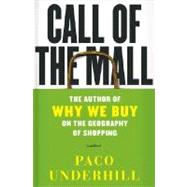
| Prologue | |
| Introduction | |
| America Shops | |
| You Are Here | |
| A Mouse Hole | |
| Dude, Where's My Car? | |
| Why Malls Fear Freedom | |
| I Brake for Meanderthals | |
| Nose and Toes | |
| Sex and the Mall | |
| The Charmin Challenge | |
| Status Anxiety and Back Pockets | |
| Fun | |
| Hands-Free Shopping | |
| Pushcarts Rule | |
| Mall Cuisine | |
| Breakfast at Cartier | |
| A Man and His Mall | |
| Who Is Your Dad? | |
| Malls of the World | |
| Where the Girls Are | |
| The Mall Touch | |
| Short Hills or Seoul? | |
| Other Venues | |
| Scenes from a Mall | |
| The Postmall World Endcap | |
| Acknowledgments | |
| Index | |
| Table of Contents provided by Publisher. All Rights Reserved. |
The New copy of this book will include any supplemental materials advertised. Please check the title of the book to determine if it should include any access cards, study guides, lab manuals, CDs, etc.
The Used, Rental and eBook copies of this book are not guaranteed to include any supplemental materials. Typically, only the book itself is included. This is true even if the title states it includes any access cards, study guides, lab manuals, CDs, etc.